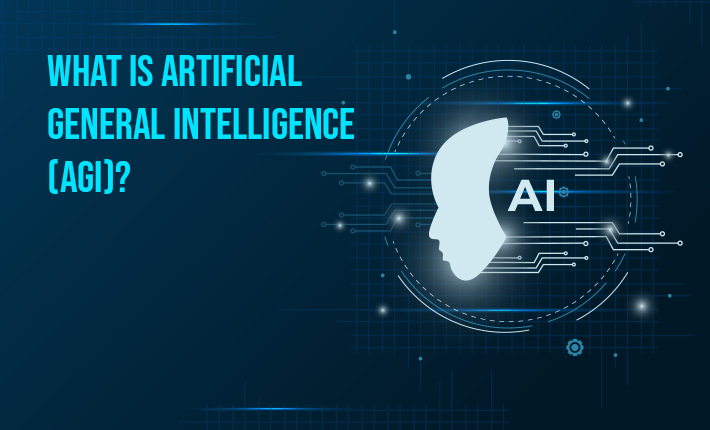Artificial General Intelligence (AGI) refers to the hypothetical ability of an artificial intelligence system to perform any intellectual task that a human being can. This includes the ability to reason, plan, learn, understand natural language, recognize objects and patterns, and adapt to new situations.
In contrast to narrow AI systems, which are designed to perform a specific task or set of tasks, AGI aims to create a more versatile and flexible type of AI that can perform a wide range of tasks in a variety of contexts. AGI is often considered the ultimate goal of AI research, as it would represent a significant step towards creating machines that are truly intelligent and capable of understanding the world in the way that humans do.
However, AGI remains a largely theoretical concept, and there is currently no AI system that is capable of true general intelligence. While significant progress has been made in various fields of AI, such as machine learning, natural language processing, and computer vision, there are still many challenges to be overcome in order to achieve AGI.
What can artificial general intelligence do?
Artificial General Intelligence (AGI) is a hypothetical form of artificial intelligence that can perform any intellectual task that a human can do. As such, the potential capabilities of AGI are vast and could revolutionize many areas of society.
Some of the tasks that AGI could potentially perform include:
1) Reasoning and problem-solving: AGI could reason through complex problems and provide solutions that humans may not have thought of.
2) Natural language processing: AGI could understand human language and engage in conversation with humans, providing accurate translations and responding to questions and requests.
3) Learning and adaptation: AGI could continually learn and adapt to new situations, becoming more intelligent over time.
4) Creativity: AGI could generate new ideas and concepts, potentially revolutionizing fields like art, music, and literature.
5) Strategic planning: AGI could assist with strategic planning in fields like business, finance, and government, helping to make more informed decisions and predictions.
6) Scientific research: AGI could assist scientists with data analysis and experimentation, potentially accelerating the pace of scientific discovery.
7) Robotics and automation: AGI could be used to control robots and other autonomous machines, allowing for more efficient and effective automation in various industries.
Overall, AGI has the potential to significantly impact many areas of society, from healthcare and education to finance and manufacturing. However, it is important to note that AGI remains a largely theoretical concept, and there is currently no AI system that is capable of true general intelligence.
AGI vs. AI: What's the difference?
Artificial Intelligence (AI) refers to a broad field of computer science that involves creating machines that can perform tasks that would normally require human intelligence, such as perception, reasoning, learning, and problem-solving. AI systems can be divided into two main categories: narrow AI and general AI.
Narrow AI, also known as weak AI, refers to AI systems that are designed to perform a specific task or set of tasks. Examples of narrow AI include image recognition software, chatbots, and self-driving cars.
On the other hand, Artificial General Intelligence (AGI), also known as strong AI or full AI, refers to a hypothetical form of AI that has human-like intelligence and can perform any intellectual task that a human can do. AGI is capable of adapting to new situations, learning from experience, and reasoning through complex problems.
The main difference between AI and AGI is that AI is designed to perform a specific task or set of tasks, while AGI is designed to be flexible and adaptable to a wide range of tasks. While narrow AI systems can be highly effective at their specific task, they lack the versatility and flexibility of AGI.
It's also important to note that AGI is still a largely theoretical concept and there is currently no AI system that is capable of true general intelligence. While significant progress has been made in the field of AI, achieving AGI remains a significant challenge that requires advancements in areas such as machine learning, natural language processing, and cognitive computing.
Examples of artificial general intelligence
Although true AGI systems are not yet available, there are narrow artificial intelligence systems that have the ability to mimic or even surpass human abilities in certain areas. These systems have been the focus of AI research and offer examples of what could be possible with AGI in the future. Some of these systems include:
* IBM's Watson, which is a supercomputer that combines immense computing power with AI to perform previously impossible science and engineering tasks, such as modeling the Big Bang theory or the human brain.
* Expert systems, which are AI-based systems that can mimic human judgement and make recommendations based on data, such as recommending medicine based on patient data or predicting molecular structure.
* Self-driving cars, which can recognize objects and people on the road and adhere to driving rules and regulations, but still require human intervention in ambiguous situations.
* ROSS Intelligence, which is a legal expert system that can mine data from about 1 billion text documents, analyze the information, and provide precise responses to complicated questions in less than three seconds.
* AlphaGo, which is a computer program that excels at playing the board game Go and beat the world champion Lee Sedol in a five-game match.
* Language model Generative Pre-trained Transformer 3 (GPT-3), which can automatically generate human-like language but still lacks the full range of human intelligence.
Music AIs, such as Dadabots, which can generate a stream of music approximation based on an existing body of music. Although these examples demonstrate impressive feats of narrow intelligence, they still require human intervention and lack the flexibility and adaptability of AGI. Applying AGI to these systems could potentially improve their functionality and automate tasks that currently require human intervention. However, developing true AGI remains a significant challenge in the field of AI.
What is the future of AGI?
The future of AGI is difficult to predict, as it is a field of research that is still in its infancy. However, there is a lot of excitement and speculation about the potential applications and implications of AGI.
If AGI is achieved, it could revolutionize many industries and areas of society, such as healthcare, finance, transportation, and education. AGI could help solve some of the world's most pressing problems, such as climate change, disease, and poverty. It could also lead to the development of new technologies and innovations that we can't even imagine yet.
However, the development of AGI also poses significant challenges and risks. For example, if AGI is not aligned with human values and goals, it could potentially cause harm or be used for malicious purposes. Additionally, the development of AGI could have significant impacts on the job market, potentially leading to widespread unemployment and economic disruption.
To ensure that AGI is developed safely and ethically, it will require collaboration between researchers, policymakers, and the public. It will also require a deep understanding of human values, as well as the ability to design systems that are aligned with those values.
Overall, the future of AGI is uncertain but holds great potential for both positive and negative impacts on society. It is important that we approach the development of AGI with caution and careful consideration of its implications.
















Post Comments